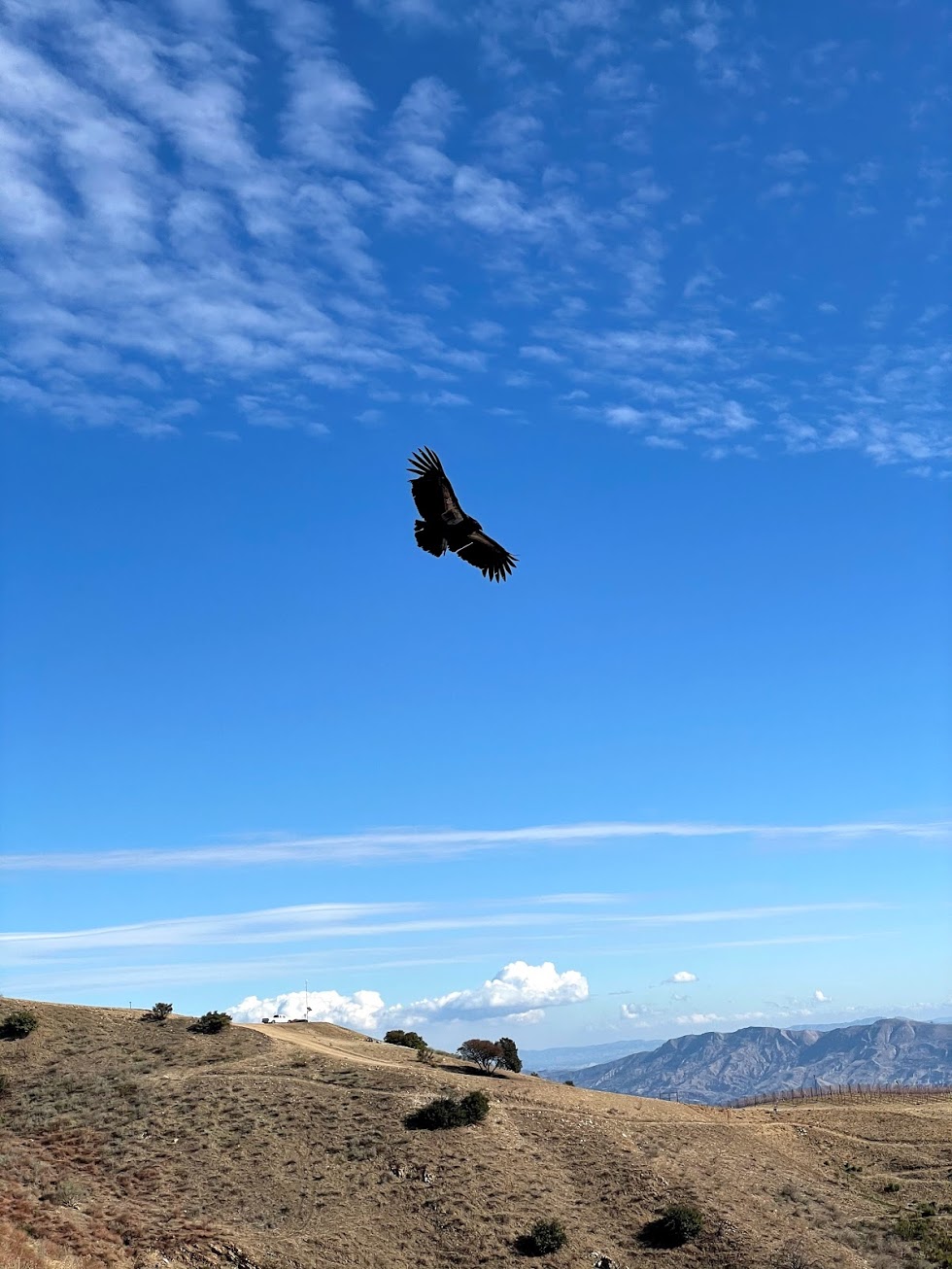Editor’s note: Reprinted with our gratitude from the Ojai Valley News (www.OjaiValleyNews.com)
By Perry Van Houten (pvh@ojaivalleynews.com)
Despite a new law banning the use of lead ammunition in the state, California condors continue to die from lead poisoning.
Of the 42 condor deaths in the wild in 2020 — the first full hunting season in which non-lead ammunition was required for all hunting of animals, including pest control — 12 were due to lead poisoning, according to the U.S. Fish and Wildlife Service.
Andrew Clare is hunting and conservation outreach coordinator with the nonprofit Great Basin Institute, which has an office in Ventura. He works on behalf of the US Fish and Wildlife Service condor team to address lead poisoning deaths in the free-flying condor population.
The problem, according to Clare, is that little engagement was done with the hunting community when the new law took effect, so now proponents of non-lead are playing catch-up. “To reach out to hunting and ranching stakeholders in the state and essentially get them on board with the non-lead ammunition,” he said.
The main hurdle for hunters and ranchers in switching to non-lead has been a nationwide shortage of ammunition, Clare said.
For some shooters, the difference in performance between lead and steel ammo, which loses its velocity faster, has been an issue.
Clare’s role is to help them make the switch. “And essentially help them improve their success and accuracy out in the field with these alternatives,” he said.
The most important part of the process, according to Clare, is seeing how non-lead ammunition works with your gun. “That’s a tough sell when we’re short on ammunition across the country, but we highly encourage people to practice with their guns and get used to the alternatives, because there’s a good amount being made and there’s more being manufactured as hunters increase demand for it,” he said.
Of the 213 condor deaths in the wild between 1992 and 2020, half (107) were due to lead poisoning, according to USFWS. Other known causes of mortality in the wild include predation, power lines and fire.
Use of lead ammo in hunting waterfowl was outlawed in 1992. Its use in hunting all animals and in pest control was banned in California in 2019.
In the meantime, the condor’s territory has been continually expanding across the state, including locally. “There have been some recent sightings around the Sulphur Mountain area. They’ve been nesting in the hills around Ojai. We’ve seen them around Casitas Springs,” Clare said.
As of Dec. 31, 2020, the total world population of California condors was 504, with the wild, free-flying population numbering 329. Of those, 186 were in Southern California.
With populations of the massive bird spreading out statewide and searching for carcasses to feed on, the hunting and ranching community is going to be on the frontline of the switch to non-lead, according to Clare. “Condors are a scavenging species, and their success is going to be based on the hunters and ranchers making this switch,” he said.
It’s not just condors that are dying from lead exposure, but other scavengers such as bald and golden eagles.
To find out what the issues are with moving to non-lead ammo and to hopefully help remediate those, Clare’s organization holds shooting demonstrations, ammunition testing, and hosts a booth at hunting events to talk with hunters in a non-confrontational way. “To see what the concern is and how can we help.” he said.
Many people are very much in favor of the switch, Clare said, or they’re at least willing to comply with the switch to help save condors. “Hunters are conservationists. That’s an old phrase but it’s a very true one, especially when it comes in context with this issue,” he said.
The switch to non-lead ammunition by hunters and ranchers will be the last piece of the puzzle in the conservation success of the condor, according to Clare. “They will be the ones that will be credited for the long-term survival of the species,” he said, “if the switch is made.”
For more information on switching to non-lead ammunition, visit: www.huntingwithnonlead.org
